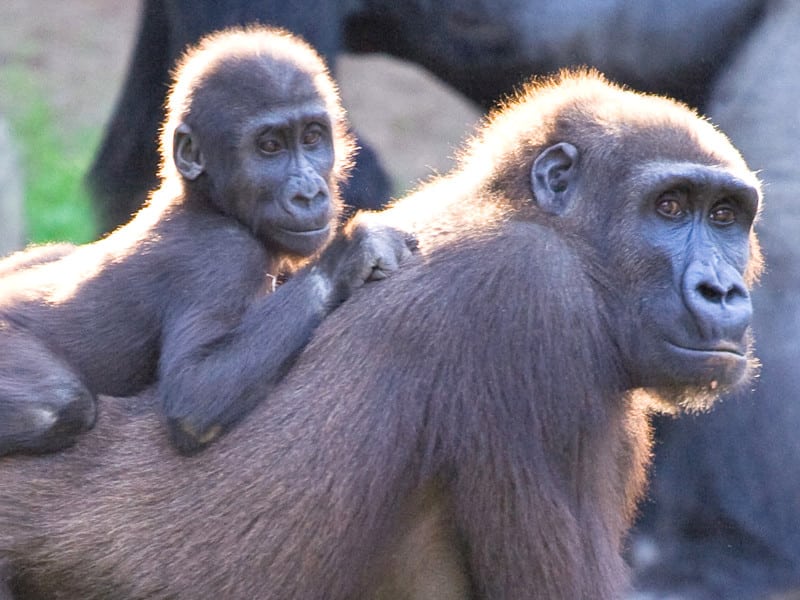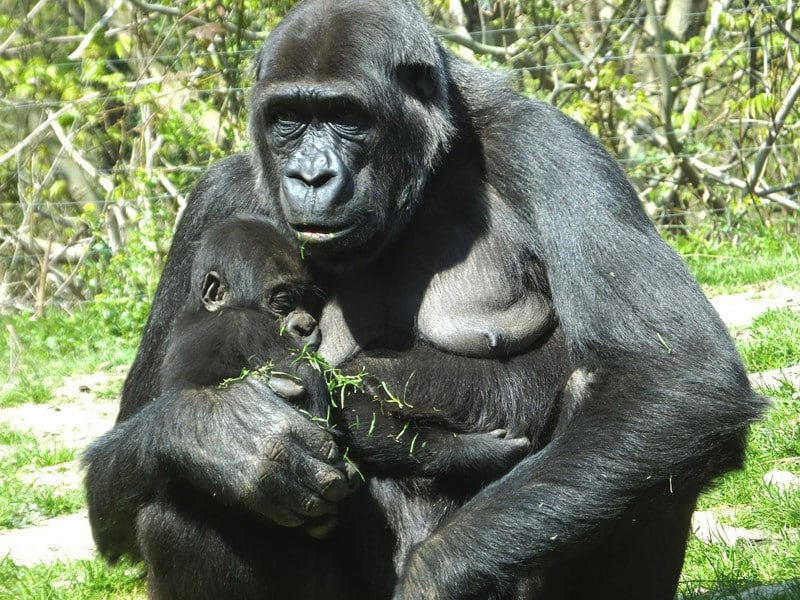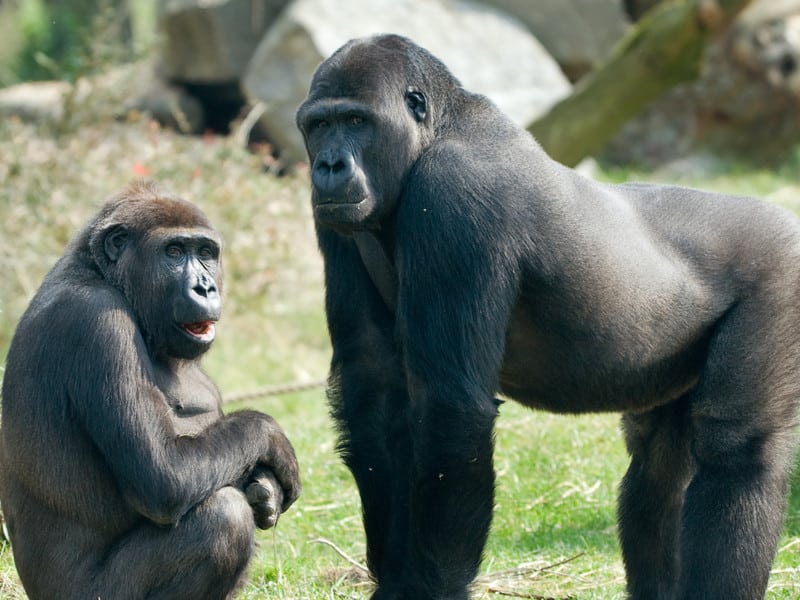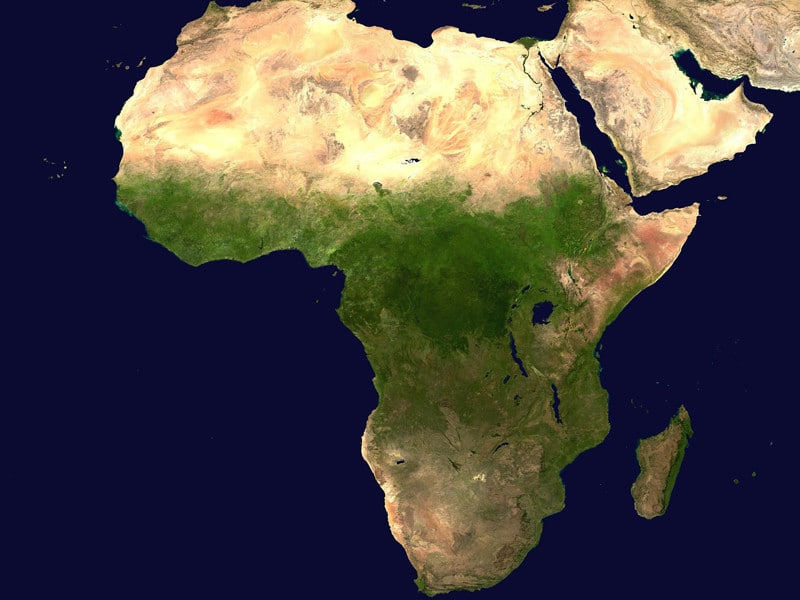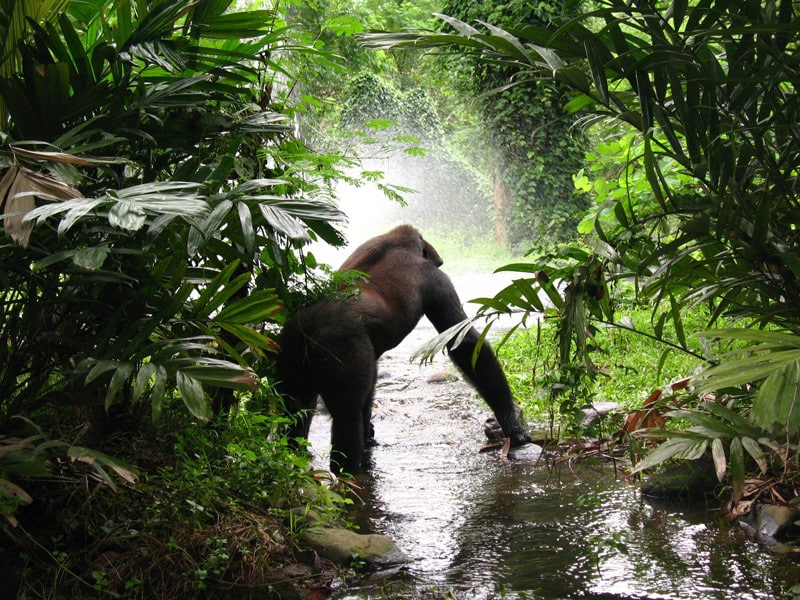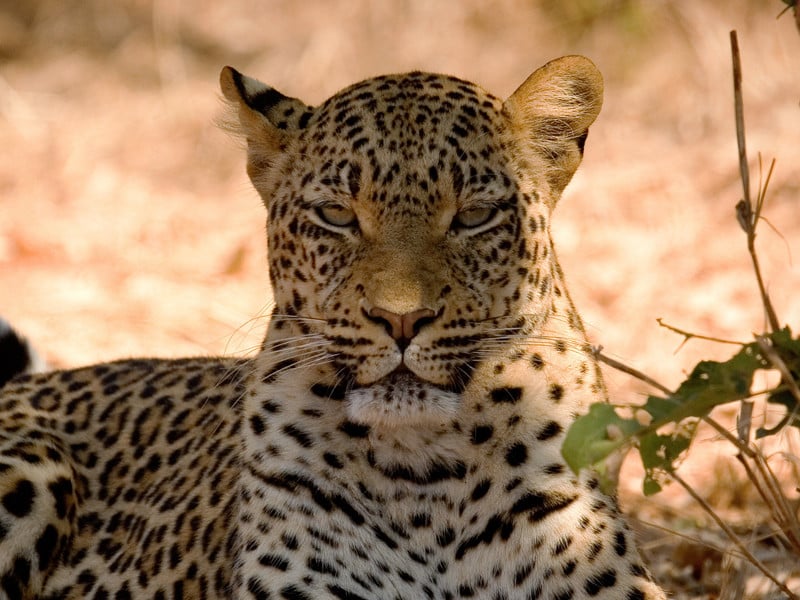Introduction
One of the largest species of ape in the world today is the Gorilla. Some research shows that Gorillas are the largest living apes in the world. They are spread across different parts of the world, but you will most likely find them in West, East, and Central African forests.
There are usually two species of Gorillas; the eastern and western Gorillas. The eastern gorillas are made up of two subspecies namely the mountain gorillas and eastern lowland gorillas while the western gorillas are made up of the Cross River Gorillas and Western Lowland Gorillas.
One of the distinctive features of Gorillas is that they share about 98% of human DNA making their lifestyle and behavior very similar to that of humans. One of the behaviors they share with humans is their reproductive process.
In this article, we will discuss how gorillas mate and the whole reproductive process.
Gorilla Family Structure
Before going into the details of how gorillas breed, let’s discuss the family structure of gorillas briefly.
A group of gorillas is usually led by a male known as the silverback. The silverback is the dominant male in the group that consists of infant gorillas, young adults, adult mature gorillas, and females. A gorilla group contains about 30 individual gorillas with the silverback giving directions on migration and activities.
It is important to state that gorillas rarely have internal conflicts. What is rarer is conflicts between two gorilla groups. Only lone male gorillas engage a gorilla group in conflict, and this is usually very violent. Sometimes, it takes the assistance of other adult male gorillas to help the silverback overcome the confrontation from the lone gorilla.
Overview of How Gorillas Mate
Gorillas are mammals with a reproduction behavior similar to that of other hominids. A lot of research has been done to learn about this part of their life, but most of the information currently available comes from individuals in captivity, particularly in the cases of mountain gorillas (Gorilla beringei beringei) and western lowland gorillas (Gorilla gorilla gorilla).
After researching their reproductive behavior, it has been found that all subspecies share many similarities. Similar to humans, Female gorillas give birth to 1 offspring per delivery, and rarely produce twins. The estrous cycle or reproductive cycle, the recurring reproductive cycle is 28/30-33 days, depending on the subspecies.
After their first ovulatory cycle, they have to wait for a two-year period to breed an infant.
Females become sexually mature at 10-12 years old, while males at 11-13 years. Female gorillas can reach sexual maturity years earlier, even at 7-8 years old, and can have their first ovulatory cycle even during their sixth year of life, but they do not start breeding until they are ten years old or later. One of the most surprising facts is that after their first ovulatory cycle, they are unable to procreate an infant for about two years.
Generally, once a female gorilla matures and is ready to breed, she has two options. The first one is to leave the family group and go join another gorilla group where she can mate with another dominant male or silverback.
The reason for this action is to prevent in-breeding or mating with their fathers. This brings us to the next option available to mature female gorillas. They can decide to stay within the family group. However, they will need to put extra effort into avoiding copulation with their fathers. They often do this by opting to mate with less subordinate males within the group.
With the mature males in the gorilla group, the available option is to leave the group and be a loner stealing females from other groups. This is because it is expected that a male gorilla mates with the female. They could also join a group of bachelor gorillas and try to attract females from other groups.
Courtship and mating
Gorillas are polygamous animals. They can mate and have offspring with more than one female. However, once he starts getting old and losing his dominance and the end of his reproductive cycle is in sight, female gorillas in his group are likely to leave him for other groups with a dominant silverback.
While some females may remain with the aging silverback out of loyalty, they leave him for other groups once he dies.
The death or weakness of a silverback is not the only reason why mature female gorillas leave their groups. They leave for varying reasons, popular among which is the protection of their offspring especially when a new silverback takes over the group.
While most courtship and mating activities are initiated by the female gorilla, by nature, male gorillas can perceive the moment when a female is in heat (available to mate). However, the external signs are not as evident as in female chimpanzees, which show swelling in the genital region easy to note.
There is not a specific mating season so that they can mate during any time of the year. Females are in heat for 1 or 2 days a month, but before they start having sex partners they must be separated from their born troop and start searching for a “silverback” male from another group.
Females are the ones who attract male gorillas with body movements: initially, slowly, and leisurely they approach the “silverback” with uninterrupted eye contact while puckering their lips, and then they have to assess the male response to take the next step. If the male does not react to her advances, she gets closer and can even touch him. If this still does not work, she hardly hits the ground in a final attempt to draw his attention once and for all.
Usually, only the “silverback” leader has the right to mate with the females.
In case a male performs the courtship, the purpose is the same: attract a female to mate with her, for that, he gets closer to touch her and emit sounds.
In groups with several males, females may be forced to copulate with more than one, but usually, only the “silverback” leader has the right to mate with a female.
How Do Gorillas Mate?
After courtship, gorillas mate on the ground. The popular position for mating among gorillas involves the female gorilla, who is usually smaller in size kneeling on the ground while the male gorilla stays on top of her.
Until recently it was believed that only humans and bonobos can mate face to face, but it is now known that gorillas are also able to do it. Some subspecies of gorillas such as the mountain gorillas and lowland gorillas have been found to mate in this manner.
It is important to state that male gorillas sometimes force female gorillas to mate even when they are not in heat or estrus. This was observed in a research carried out in 1982 where the silverback was observed to have used aggression to force the female gorilla to initiate the mating process.
Do Gorillas Mate for Other Reasons Apart from Reproduction?
Research has shown that gorillas rarely mate for leisure. The principal reason for mating among gorillas is reproduction. However, there seem to be some exceptions.
It has been observed that some female gorillas mate with the silverback to win favor from the dominant male or prevent him from mating with other adult female gorillas within the group. The occurrence of this behavior has been confirmed many times, and it usually involves expectant female gorillas mating with the dominant male in the group.
Researchers have assumed that the reason for this behavior is to prevent the silverback from mating and impregnating with other adult female gorillas in the group ready for breeding. This assumption makes sense because the attention a silverback gives a mature adult female ready to mate is so much that it provokes jealousy and competition within females in the group.
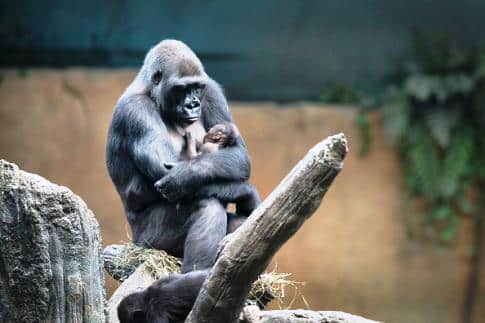
Offspring care
After the success of the mating process, the female gorilla is most likely going to conceive and go into gestation. A female gorilla’s gestation period is about 8.5 months. One of the signs of pregnancy in female gorillas is an increase in breast and stomach size. However, unlike breast size, the increase in stomach size is usually small and hardly noticeable.
Births usually occur in the early hours of the morning. The signs of approaching childbirth include loss of appetite, feeling uncomfortable around babies, and incessant stretching. Childbirth can happen any time of the year, and after childbirth, a female gorilla cannot breed for the next four years or so.
This low reproduction rate complicates the recovery of continuously decimated populations. This is why it is very difficult for a female gorilla to birth more than 8 offspring in her lifetime. Even if she does, very few of them will survive at birth. This is because 38-40 percent of the infant gorillas die at some point during their first three years of life, during the lactation period.
There are many reasons responsible for the high mortality rate of infant gorillas. They include trauma at birth or an early age, and this accounts for about 56% of the deaths of infant gorillas. There is also the issue with a new silverback. When a new dominant male takes over a group of gorillas, he kills all the nursing infants. This is to create an enabling environment for mating with the females in the group.
Lastly, there is the health and diseases issue. 15% of infant gorillas die of respiratory infections. Other diseases that cause the death of infant gorillas, especially mountain gorillas, include gastrointestinal parasitism, Capillariasis, and lymphoid disease.
Playing gorillas
Gorillas are born weighing about 2 kilos, and mostly their moms take care of them. Males usually do not participate in offspring care, although sometimes socialize with them.
The role of the male gorilla is to ensure the acceptance of the gorilla into the group and prevent young adults from bullying the infants. This is the reason why the mother lives close to the male gorilla for the first five months of the infant’s life.
The mother carries her young, which firmly holds the mother’s hair up to they are 3-6 months old when the infant begins to walk. Infants’ weaning starts when they are three years old. As typically happens in primates, the mother-infant bond is unyielding and can last for many years.
The life cycle of gorillas is similar to the human life cycle in stages, although not in all times. The first stage is childhood and ranges from birth until about five months old. At three years starts the juvenile stage; they are no longer infants, but they are not adults either. At about ten years old or when they reach sexual maturity, gorillas enter adulthood.
Sources:
https://seaworld.org/en/animal-info/animal-infobooks/gorilla/reproduction
https://www.bwindiforestnationalpark.com/how-do-gorillas-mate-gorilla-breeding-guide.html
https://seaworld.org/en/animal-info/animal-infobooks/gorilla/birth-and-care-of-young
https://en.wikipedia.org/wiki/Gorilla#Reproduction_and_parenting

